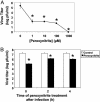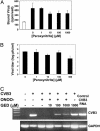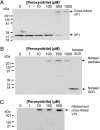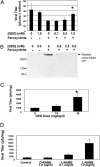Peroxynitrite inhibition of Coxsackievirus infection by prevention of viral RNA entry
- PMID: 15286280
- PMCID: PMC511044
- DOI: 10.1073/pnas.0400518101
Peroxynitrite inhibition of Coxsackievirus infection by prevention of viral RNA entry
Abstract
Although peroxynitrite is harmful to the host, the beneficial effects of peroxynitrite are less well understood. We explored the role of peroxynitrite in the host immune response to Coxsackievirus infection. Peroxynitrite inhibits viral replication in vitro, in part by inhibiting viral RNA entry into the host cell. Nitrotyrosine, a marker for peroxynitrite production, is colocalized with viral antigens in the hearts of infected mice but not control mice. Nitrotyrosine coprecipitates with the viral polypeptide VP1 as well. Guanidinoethyl disulfide, a scavenger of peroxynitrite, blocks peroxynitrite inhibition of viral replication in vitro and permits an increase in viral replication in vivo. These data suggest that peroxynitrite is an endogenous effector of the immune response to viruses.
Figures





References
Publication types
MeSH terms
Substances
Grants and funding
LinkOut - more resources
Full Text Sources

